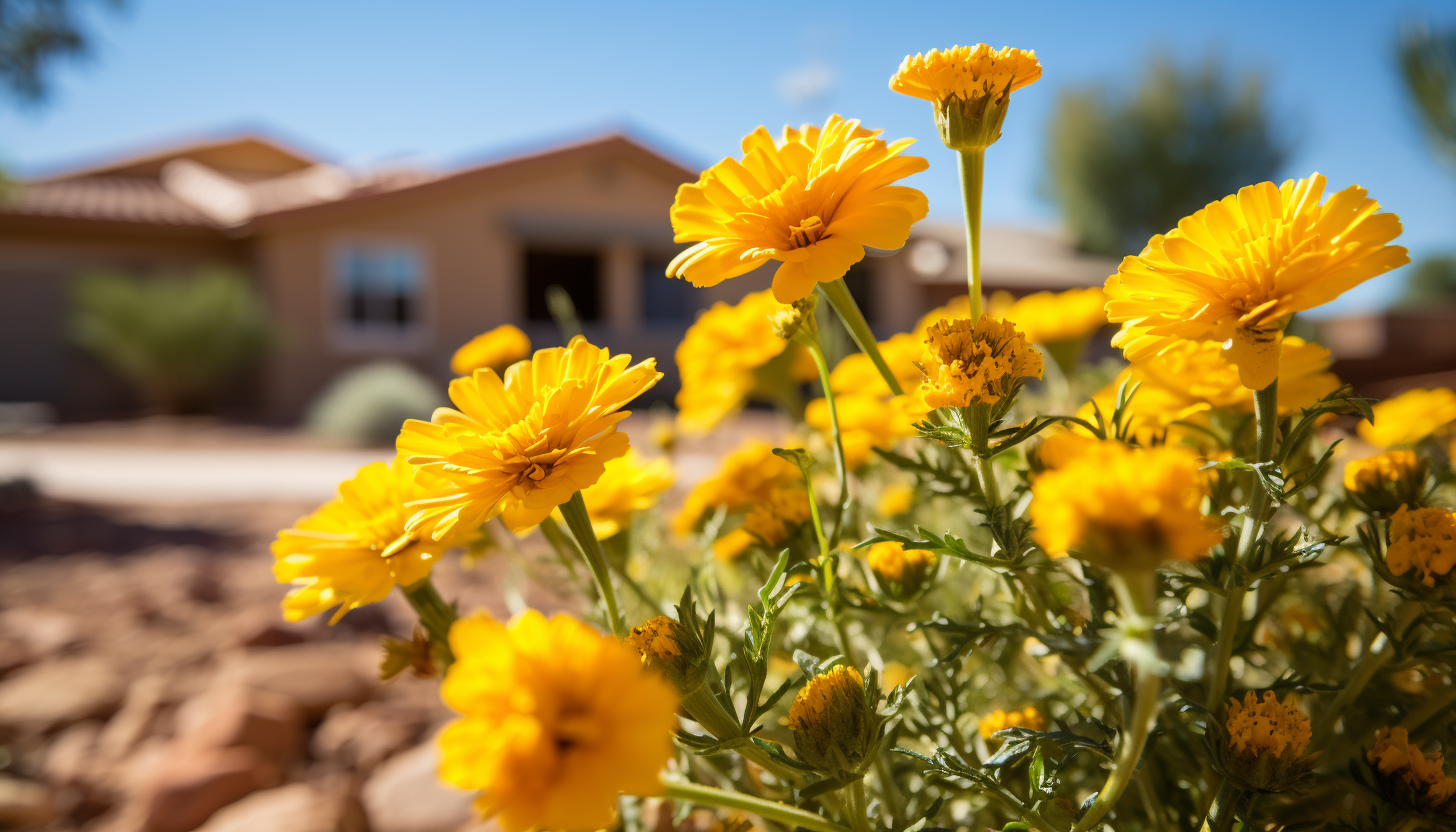Nevada’s arid climate presents a unique challenge for gardening enthusiasts seeking to create lush and vibrant landscapes. With water conservation becoming more critical than ever, turning to drought-tolerant plants for Nevada yards is a wise and eco-conscious choice. Below you will find a selection of six hardy and drought-resistant plants, shrubs, and trees that not only survive but thrive in Nevada’s challenging conditions. Embrace the beauty and resilience of these water-wise wonders to create a sustainable and stunning garden that will flourish even during the driest months.
Desert Marigold (Baileya multiradiata):
The Desert Marigold is a radiant burst of sunshine in your garden, boasting bright yellow flowers with long-lasting blooms. Its silvery-gray foliage serves as an effective water-saving adaptation, reflecting sunlight and minimizing water loss through evaporation. This native Nevada plant thrives in full sun and well-draining soil, making it an excellent choice for xeriscapes or rock gardens.
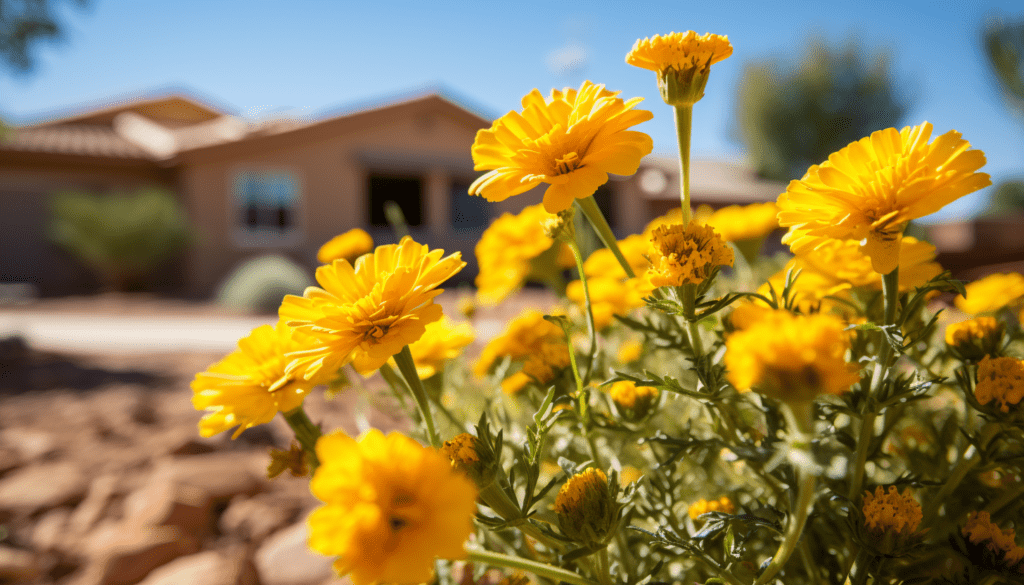
- Scientific name: Baileya multiradiata
- Common names: Desert Marigold
- Habitat: Native to the southwestern United States and northern Mexico, found in desert regions and sandy soils.
- Growth: Perennial herb with bright yellow daisy-like flowers and silver-green foliage.
- Blooming time: Typically blooms from late winter to early summer, depending on the region.
- Drought-resistant: Well-adapted to arid conditions and requires minimal water once established.
- Wildlife attraction: The flowers attract pollinators such as bees, butterflies, and other insects.
Mojave Yucca (Yucca schidigera):
Mojave Yucca is a striking architectural beauty that adds a touch of southwestern charm to your garden. With its sword-like leaves and tall, dramatic flower spikes, this drought-tolerant plant makes a captivating focal point. Its resilience and low water requirements are a perfect match for Nevada’s desert environment.
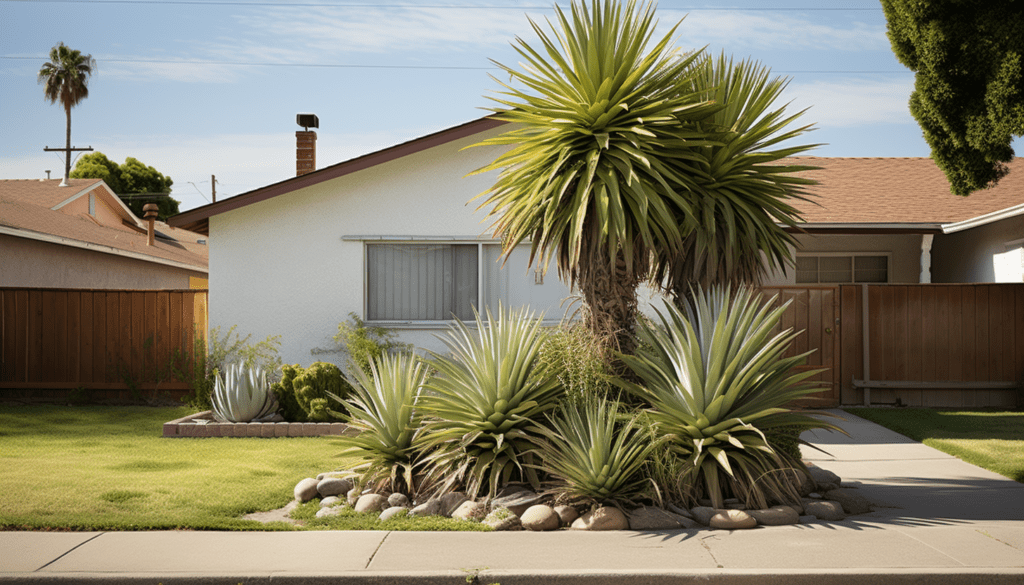
- Scientific name: Yucca schidigera
- Common names: Mojave Yucca, Spanish Dagger
- Habitat: Native to the Mojave Desert in southwestern United States and northwestern Mexico.
- Growth: Large succulent plant with long, stiff leaves and tall flower stalks.
- Flowers: Produces cream-colored, bell-shaped flowers on tall spikes.
- Cultural significance: Historically, the fibers of the yucca were used by indigenous people to make baskets and cordage.
- Wildlife interaction: The flowers are pollinated by yucca moths, which lay eggs in the flowers, ensuring the plant’s pollination.
Purple Sage (Salvia dorrii):
Purple Sage, also known as Desert Sage or Dorr’s Sage, is a drought-tolerant perennial herb with aromatic gray-green leaves and eye-catching purple flower spikes. As a native to the Great Basin and Mojave Desert, this plant is well-adapted to Nevada’s challenging conditions. Its drought resistance and captivating fragrance make it a favorite among gardeners and pollinators alike.
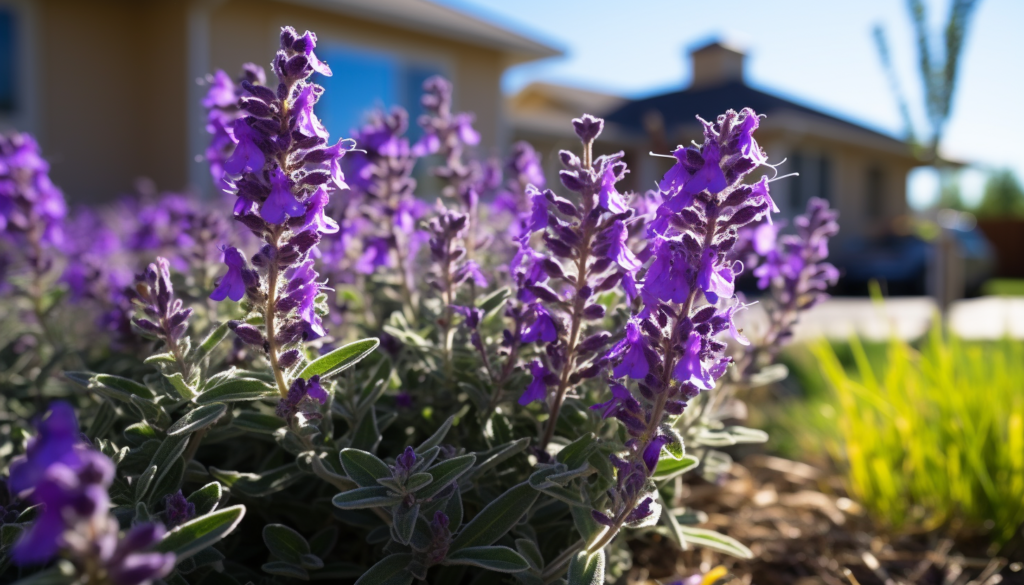
- Scientific name: Salvia dorrii
- Common names: Purple Sage, Desert Sage
- Habitat: Native to the western United States, found in desert and sagebrush habitats.
- Growth: Perennial shrub with aromatic, silvery-gray leaves and spikes of purple flowers.
- Wildlife attraction: The flowers attract bees, butterflies, and other pollinators, while the plant serves as a food source for desert animals.
Desert Four O’Clock (Mirabilis multiflora):
Desert Four O’Clock is a delightful perennial wildflower that surprises with its vibrant blossoms that open in the late afternoon. Its tubular, magenta-pink flowers release a sweet fragrance, attracting hummingbirds and butterflies to your garden. With its low water needs, this charming native plant is an excellent addition to any drought-tolerant landscape in Nevada.
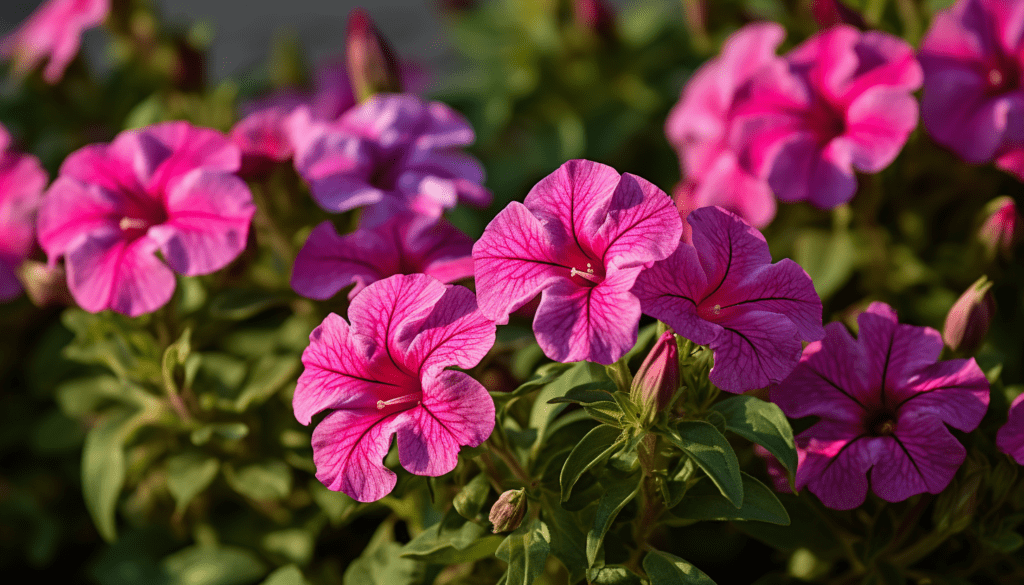
- Scientific name: Mirabilis multiflora
- Common names: Desert Four O’Clock, Colorado Four O’Clock
- Habitat: Native to the southwestern United States and Mexico, typically found in desert regions, dry slopes, and canyons.
- Flowers: The plant produces trumpet-shaped flowers that come in various colors, including pink, magenta, white, and occasionally yellow.
- Blooming time: Typically blooms during the late afternoon and evening, giving rise to its common name “Four O’Clock.”
- Wildlife attraction: The flowers attract pollinators like moths, butterflies, and bees, while the seeds are consumed by various bird species and rodents.
Golden Barrel Cactus (Echinocactus grusonii):
For a touch of desert charm and low-maintenance beauty, consider the Golden Barrel Cactus. This round, spiny cactus is native to Mexico but thrives in Nevada’s arid climate. Its golden-yellow ribs and slow-growing nature make it a captivating and easy-care addition to rock gardens or xeriscapes.
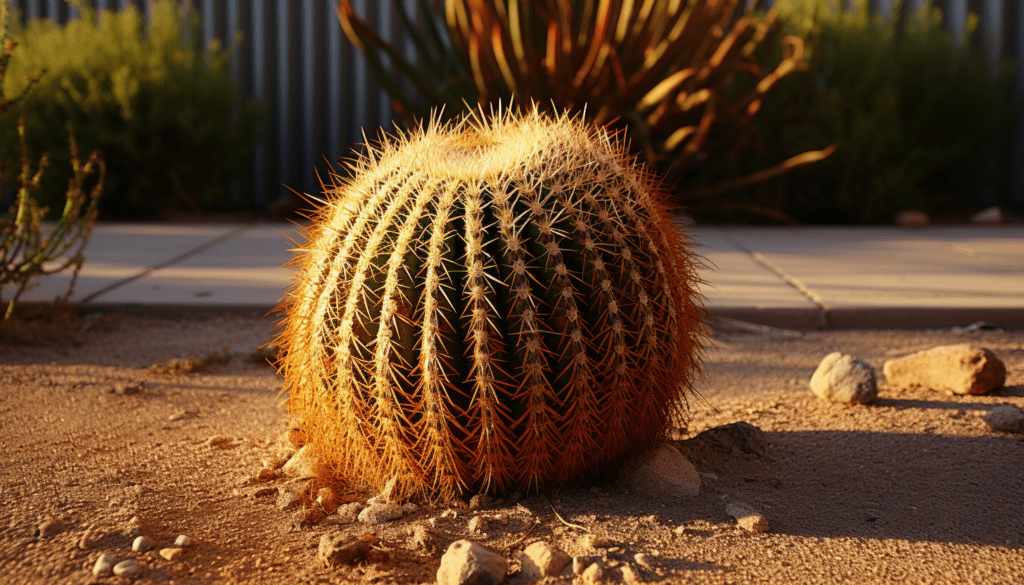
- Scientific name: Echinocactus grusonii
- Common names: Golden Barrel Cactus, Golden Ball Cactus
- Habitat: Native to central Mexico, found in arid regions.
- Growth: A round, barrel-shaped cactus with dense spines and bright golden-yellow color.
- Slow-growing: It takes many years for the cactus to reach its mature size.
- Conservation status: Considered vulnerable in the wild due to habitat destruction and illegal collection.
- Landscape use: Popular as an ornamental plant in dry gardens and xeriscapes.
Bristlecone Pine (Pinus longaeva):
If you’re looking for a drought-tolerant tree to grace your Nevada landscape, the Bristlecone Pine is an outstanding choice. Known for its ancient and gnarled appearance, this slow-growing tree is one of the longest-living species on Earth. Its resilience to harsh conditions and beautiful blue-green needles add a sense of timelessness to your garden.
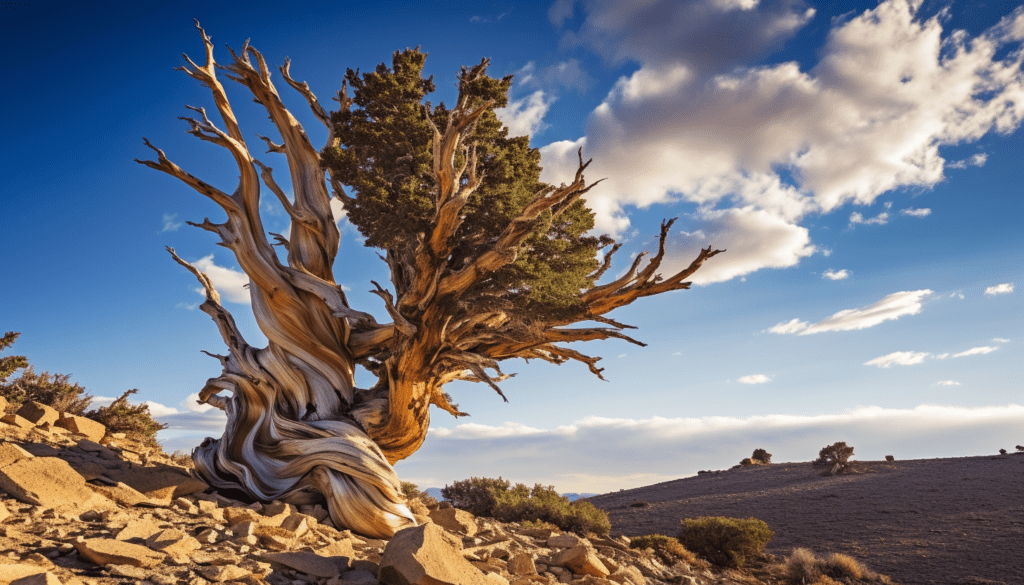
- Scientific name: Pinus longaeva
- Common names: Bristlecone Pine, Methuselah Pine
- Habitat: Found in the high mountains of the western United States, particularly in the Great Basin and Rocky Mountains.
- Longevity: Among the oldest known living trees, some Bristlecone Pines have been dated to over 5,000 years old.
- Adaptation: Thrives in harsh, high-altitude environments with cold temperatures and rocky soils.
- Unique appearance: Distinctive twisted and gnarled branches and orange-brown bark.
- Conservation status: Some groves are protected to preserve these ancient trees, as they are sensitive to climate change and human disturbances.
As water resources become scarcer, adopting drought-tolerant plants in your Nevada garden is both an environmentally conscious and visually rewarding choice. The plants mentioned above showcase the diverse beauty and adaptability that native species offer, even in the most challenging climates. Embrace the spirit of sustainability and nurture a thriving garden that reflects the essence of Nevada’s unique landscape. By choosing these water-wise wonders, you not only create a striking garden but also contribute to the conservation of this precious resource for future generations to come.
For more drought-tolerant yard ideas, check out: Front Yard Ideas for Your First-Ever Xeriscape
Have an idea for content? Get in touch, we’d love to chat.

